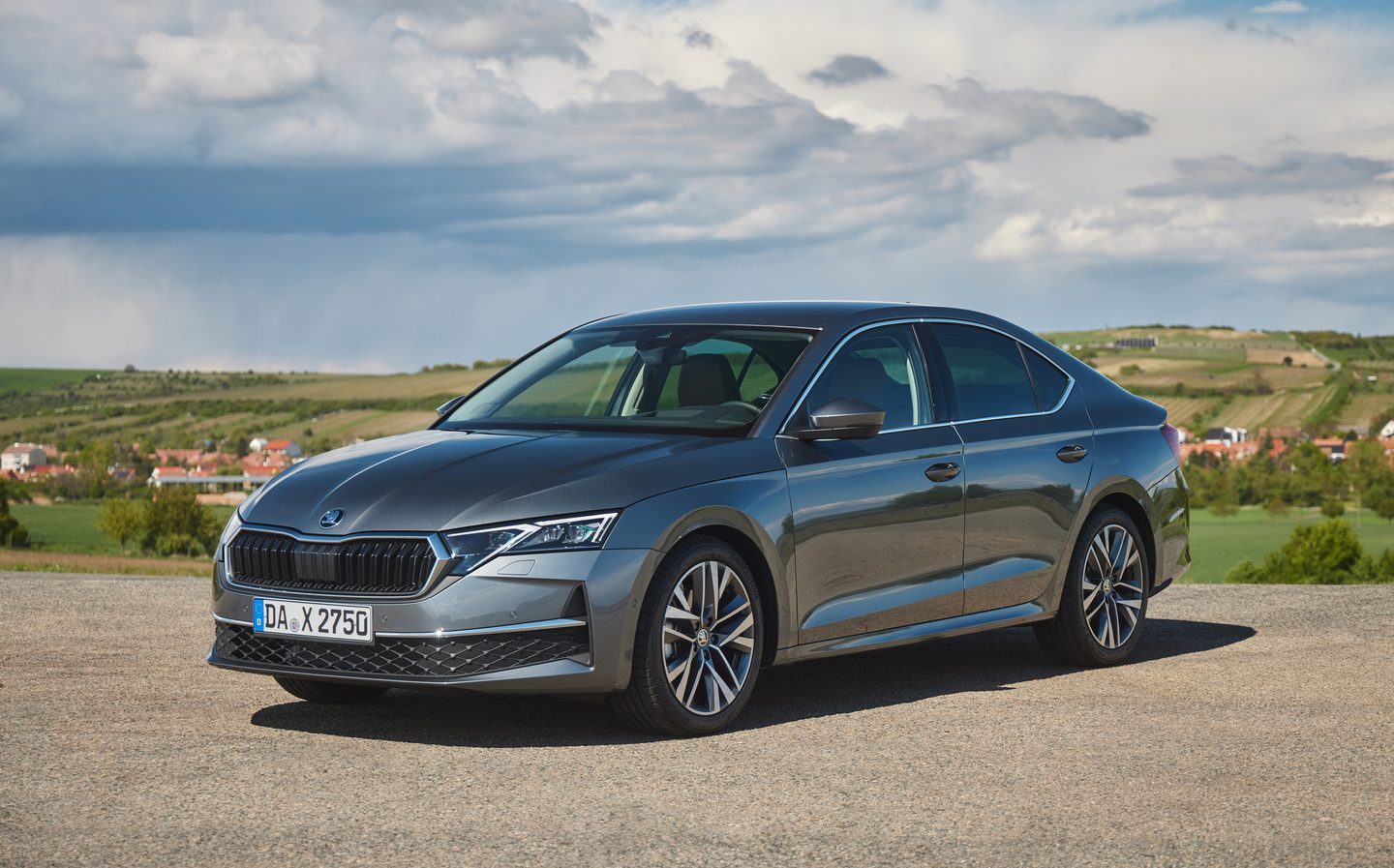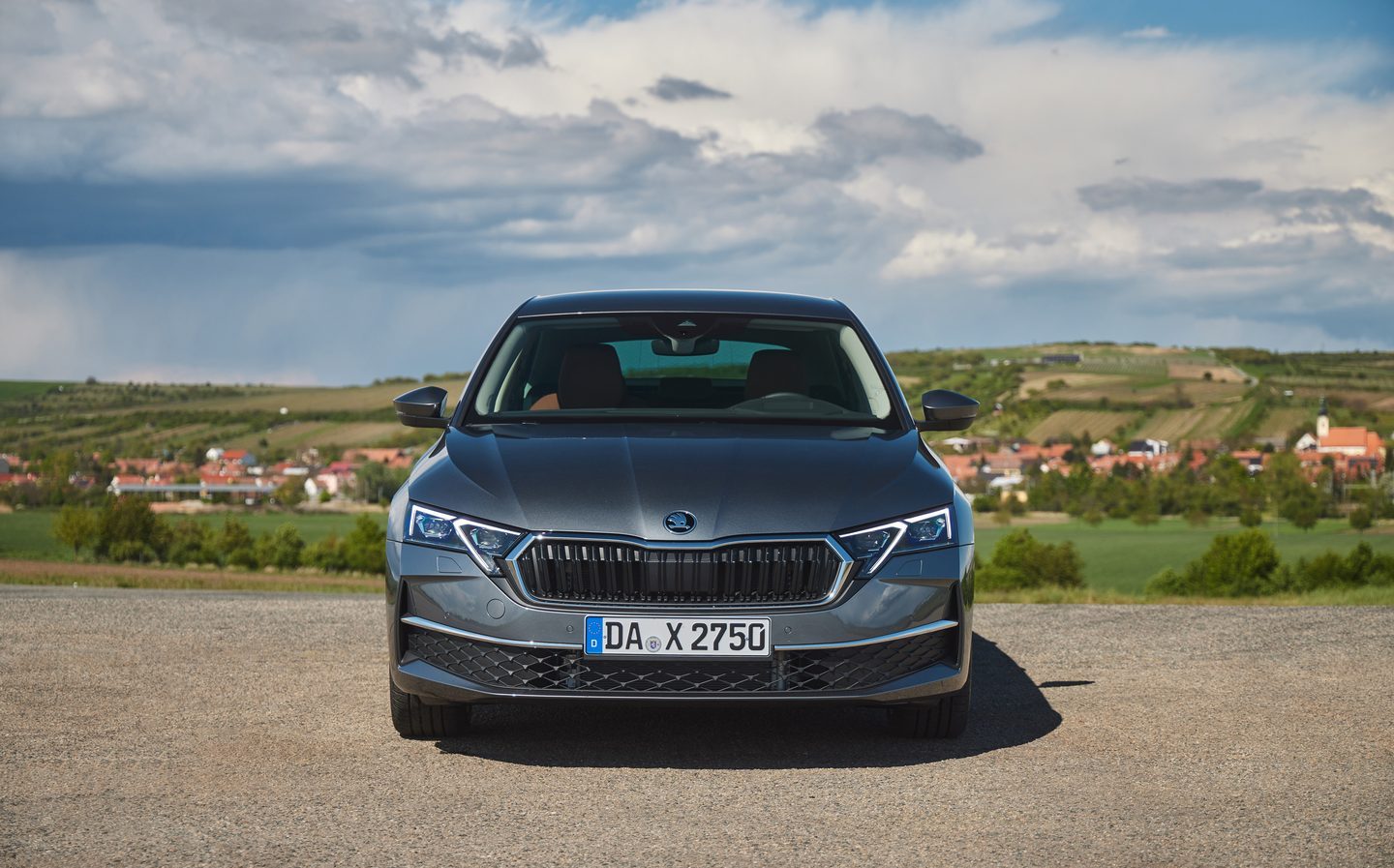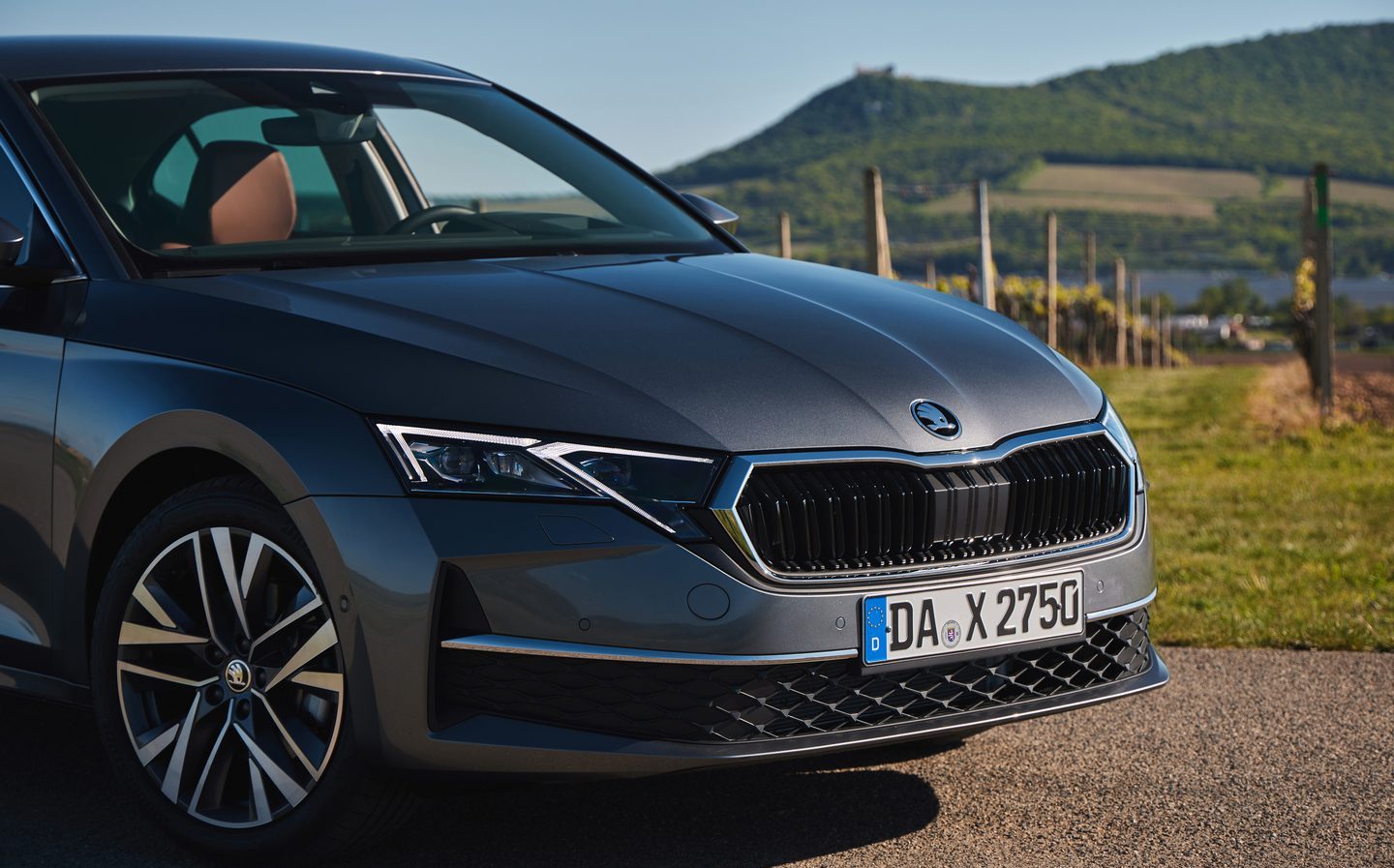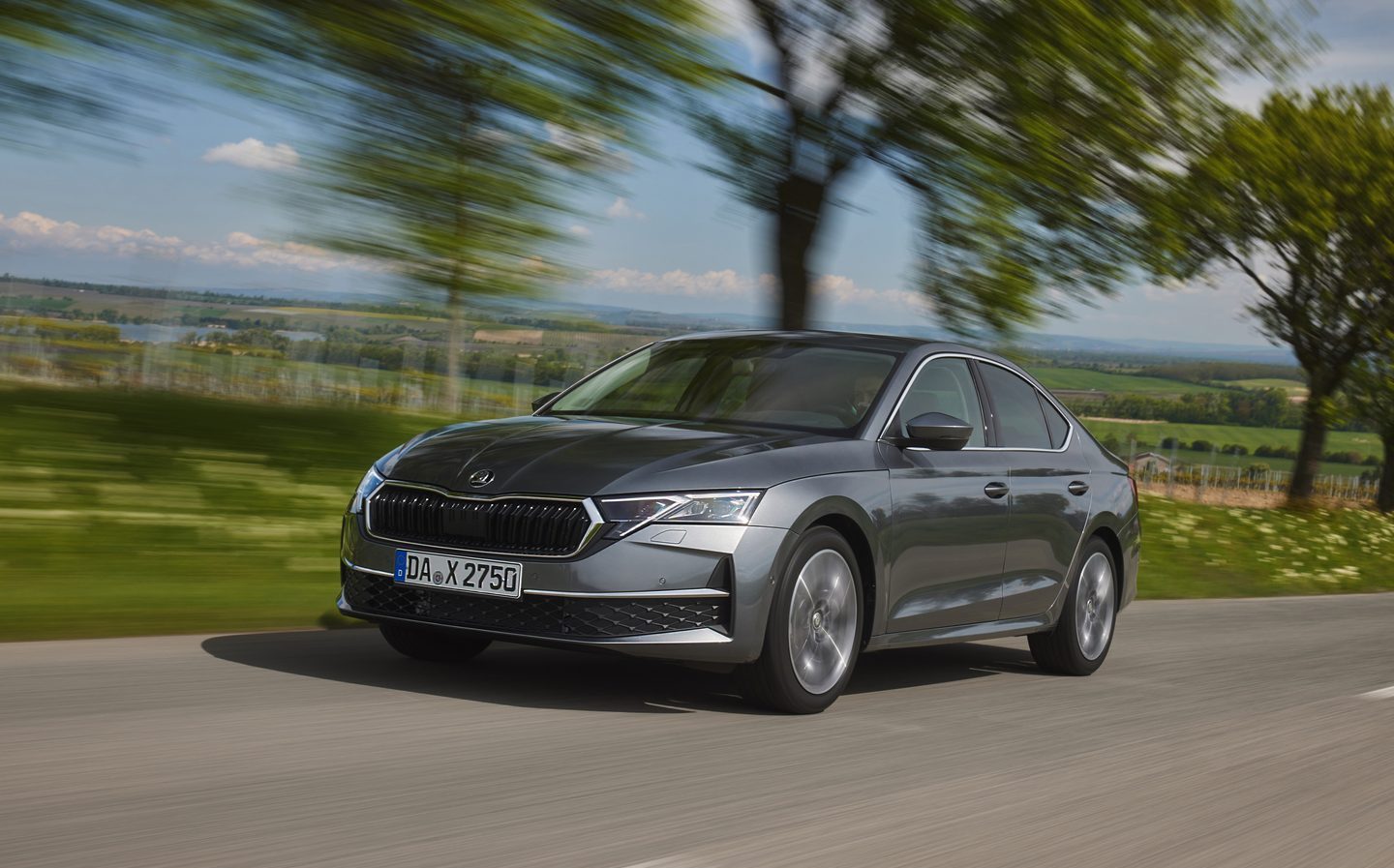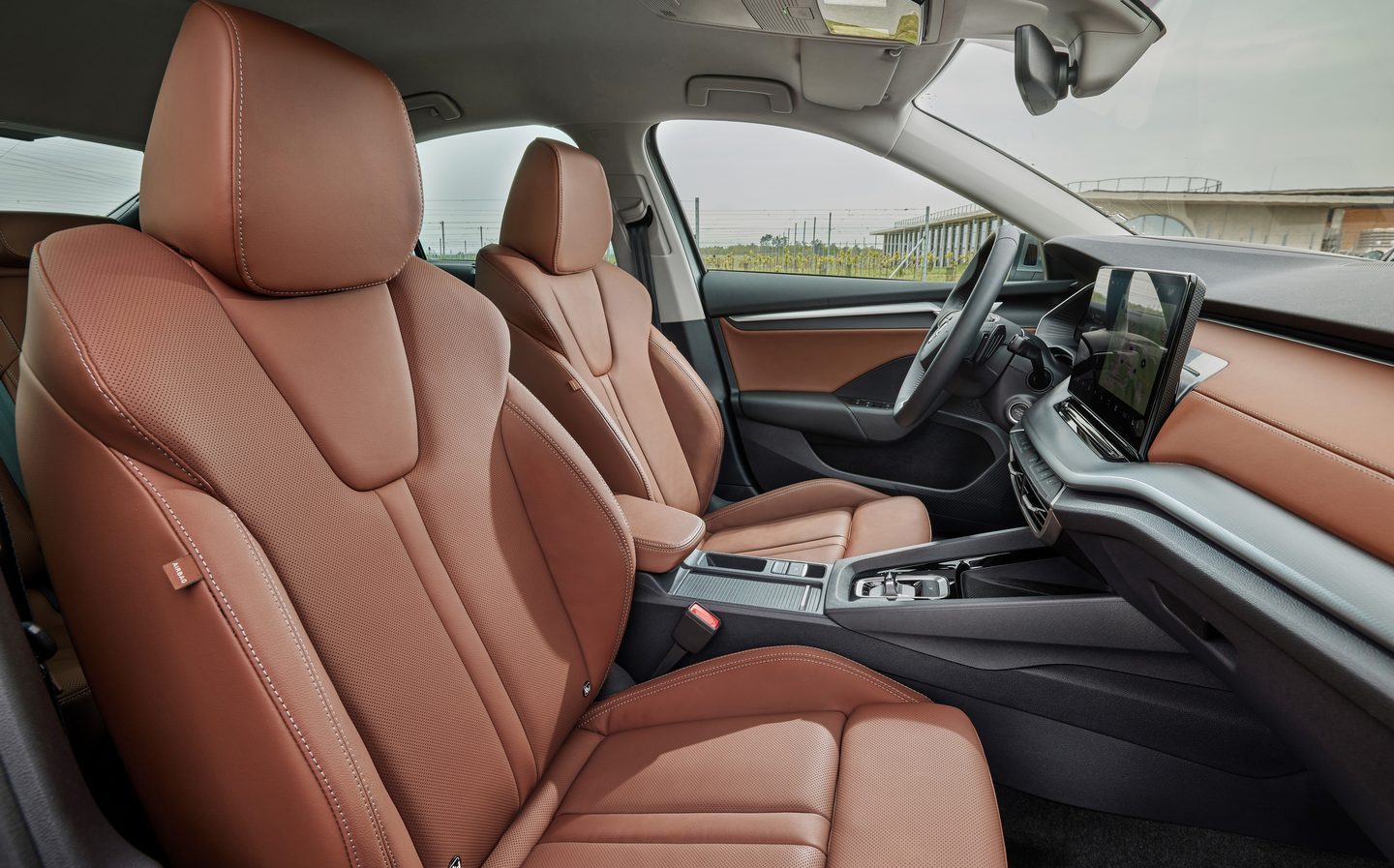Skoda Octavia 2024 review: Czech family hatch dreams big – and drives like a big dream
Plug-in hybrid power yet to return
For years, Skoda’s schtick in digging itself out of the doldrums of being the butt of everyone’s joke in the late 20th century was “never mind the quality, feel the quantity”. Value for money, essentially. Offer a lot of car and a lot of equipment for not a lot of cash, and never mind if the interior looks drab or the engines feel off the pace – the punters will come flocking because they think they’re getting more automotive real estate for their pound.
Something of that long-held segment-straddling ethos continues within the Czech company to this day, but now it offers top-notch quality too. Take, for instance, this updated fourth-generation Octavia, which launched in 2019 and is only now gaining its midlife facelift.
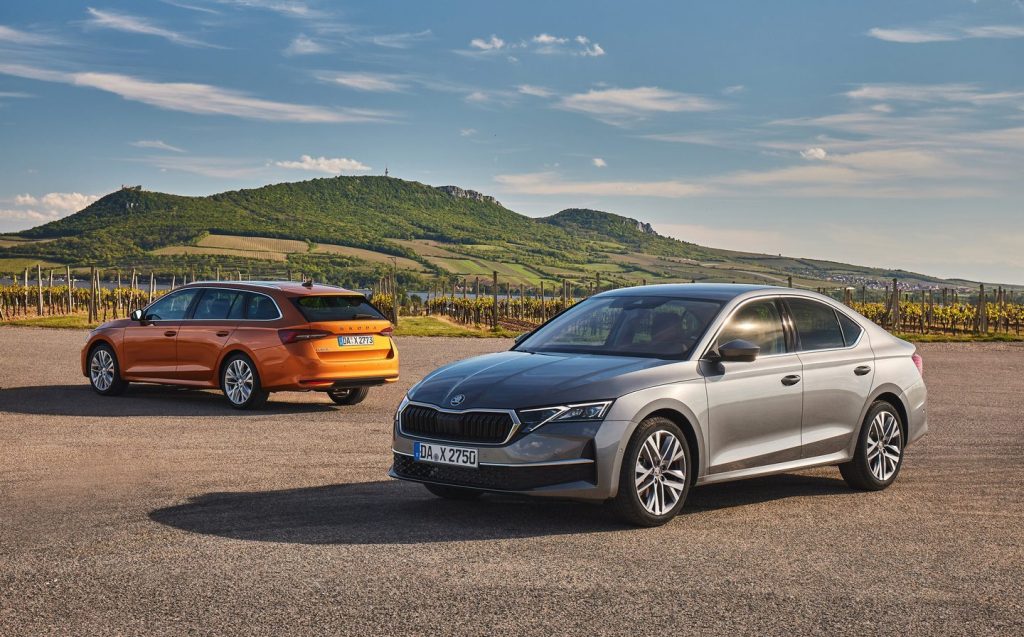
If you don’t know a lot about the automotive industry and parts-sharing, then know that underneath the Octavia is the same car as a Volkswagen Golf, or a SEAT Leon, or – more pertinently – an Audi A3.
We draw particular attention to that last one because it, too, has recently been mildly updated, with a similarly cautious programme of improvements as seen here.
And yet, where the Audi A3 starts from £29,515, and the Volkswagen Golf kicks off around £27,035, the Octavia is priced from £26,775.
Of its siblings, only the Leon seriously undercuts it, but the eye-catching £23,895 starting figure for the Spaniard is for a loss-leader with an engine no longer available in the newer Skoda and Audi lines; realistically, you’re looking at more like 25-and-a-half grand for the SEAT.
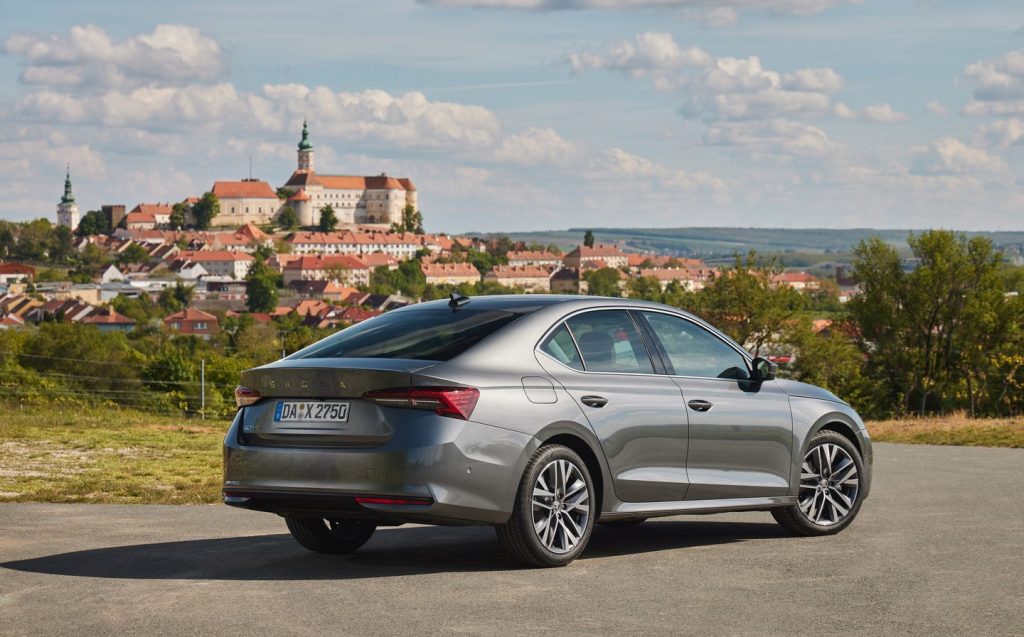
However, if you’re merely considering all four of these cars from a physical perspective, it’s the Skoda which easily looks the grandest – and, unsurprisingly, the biggest.
Available as both a hatchback and an estate, this dimensional superiority on the outside is reflected in the fact the Octavia has ginormous boot capacity in its range. Even the hatch can pack 600 litres of stuff into the back of it with all seats in use – fully 58 per cent larger than the A3 Sportback’s 380-litre figure.
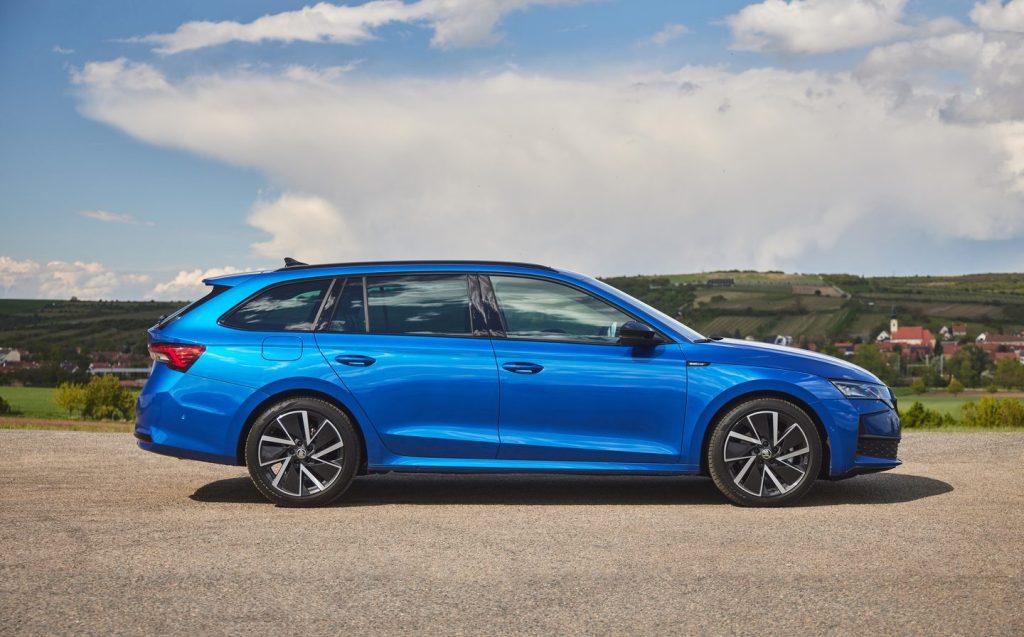
And as the Audi doesn’t come as an estate, then the Skoda further trumps its supposedly upmarket relation once more, offering 640-1,700 litres of carrying capability in wagon form. It is no exaggeration to say that the Octavia Estate embarrasses cars in the BMW 5 Series class in this regard, never mind the Audi A3.
Externally, not much has changed with the elegant aesthetic of the Octavia, with the principal changes coming in the form of new body colours, new wheels and new light clusters fore and aft.
The headlamps are the most noticeable switch, as their revised daytime running light signatures now kind of bleed into the surround for the radiator grille that is Skoda’s signature at the front. But it’s a thoroughly pleasant piece of work overall – unlike when the company made a mess of facelifting the previous generation of Octavia in 2017 with awful quad headlights, which is about the only significant misstep Skoda has made as a company in the past ten years, in all honesty.
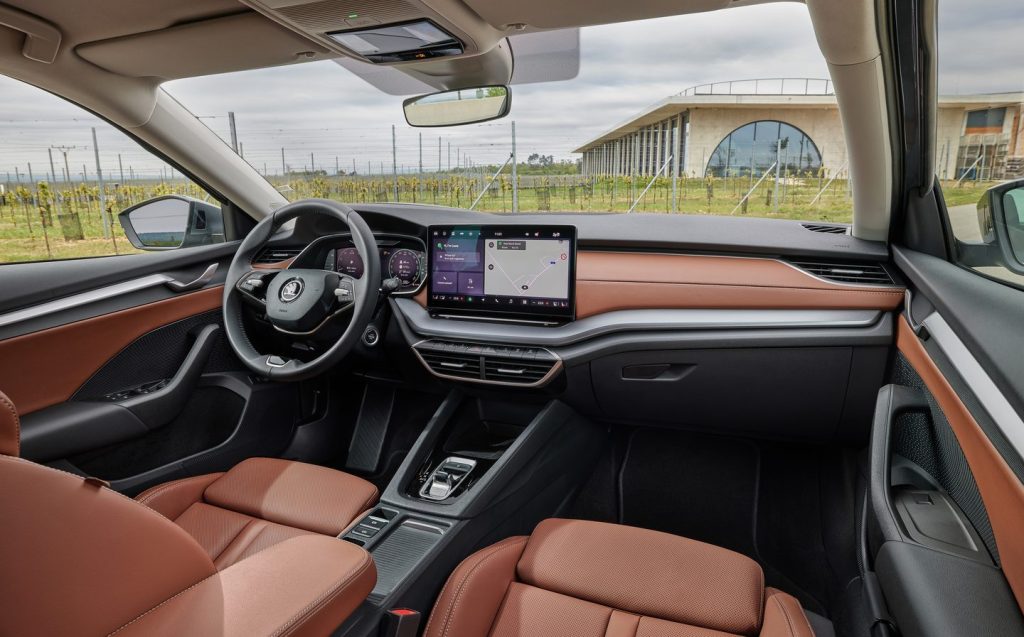
Inside, it’s the usual story for any car facelift these days, which means more impressive infotainment and a high-tech interface. In the Octavia’s case, all models now get a giant 13in freestanding central touchscreen, along with a sharpened 10.25in digital instrument cluster.
This all looks good and works reasonably well, although some will lament the fact that Skoda didn’t fit the updated Octavia with the ‘Smart Dials’ from the Superb; the in-car climate therefore remains part of the central screen only, with a shortcut button to its main display being one of the few bits of physical switchgear, arrayed in a bank above the centre air vents.
Additional tech includes a more powerful 15-watt smartphone charging pad with ventilation, so your device is prevented from overheating while its battery is topped up wirelessly. The AI-powered ChatGPT will be integrated into the onboard ‘Laura’ voice assistant later in the year, too.
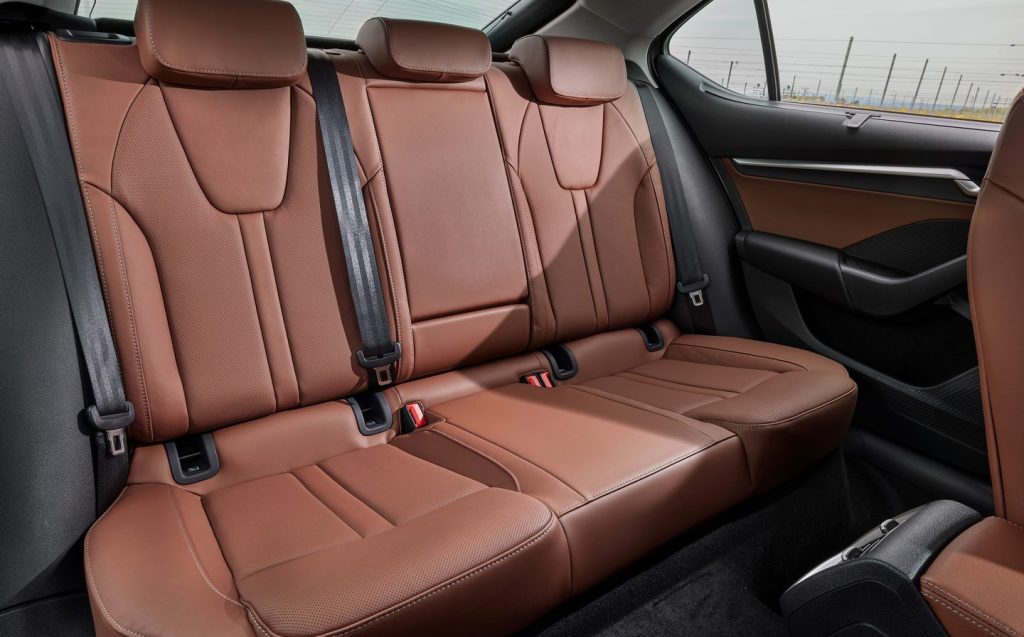
Generally, though, the Skoda’s cabin is wonderful, with lovely materials used and largely sensible ergonomics. Those sitting in the second row will enjoy plentiful lounging space in the back of the Octavia, much more than you’d get in any of the Czech machine’s directly comparable rivals.
And there’s more sustainable resource employed in the make-up of the Skoda’s interior these days, as well. For instance, the brown seats in the optional Suite Cognac interior are tanned using the husks of coffee cherries, so you could say you are sitting on a frothy cappuccino in the cabin of the Octavia if you feel that way inclined.
Trim lines in the revised range run SE Technology, SE L, Sportline and vRS.
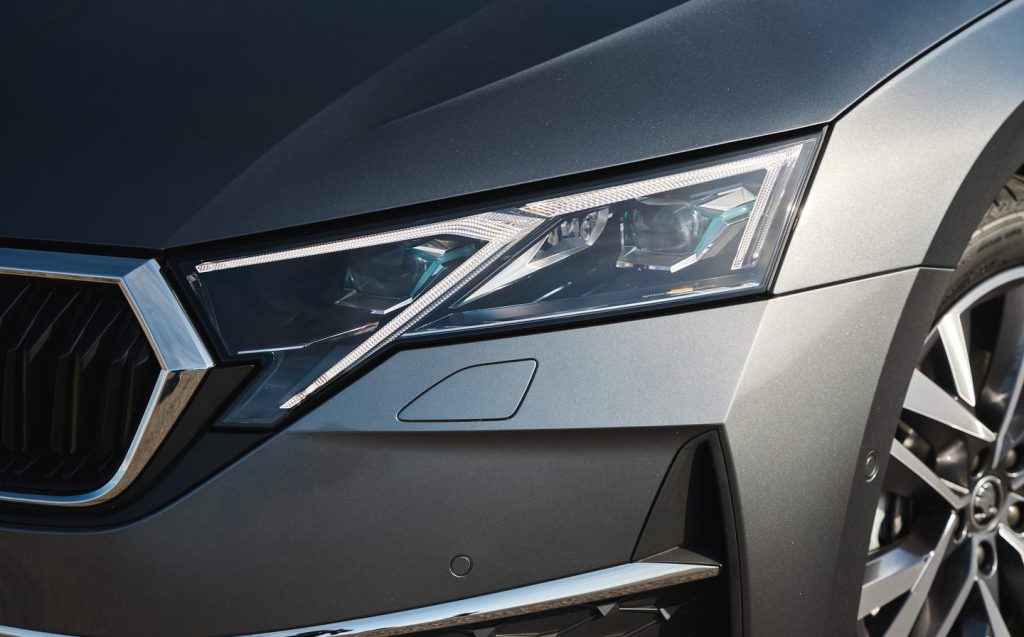
And there’s no let-up in the value aspect of Skoda here, as even the base-spec cars come with 16in alloy wheels, LED front and rear lights, heated front seats, the 13in infotainment system with navigation, wireless Apple CarPlay and Android Auto, keyless go, the 10.25in digital instruments and the new, faster Qi charging pad, among much more.
Skoda also keeps it simple for engines at this stage. There’s basically a 1.5-litre petrol option called the TSI, in two power outputs (114- and 148bhp) offered with two gearboxes, and then a 2-litre diesel TDI, again in 114- and 148bhp guises.
The main differences here are that the TSI six-speed manuals are not fitted with mild-hybrid fuel-saving technology (Skoda calls it “e-Tec”), whereas the seven-speed DSG automatics are, while over on the diesel side of things there’s no such hybrid assistance at all, and the 114bhp engine is available with a manual gearbox only, while the 148bhp TDI is exclusively paired to the DSG auto.
We said this when driving the all-new Superb Estate a while back, but in what might be perceived as a contrarian stance in the present ecological era, the best companion for the facelifted Octavia is the 2-litre TDI with 148bhp.
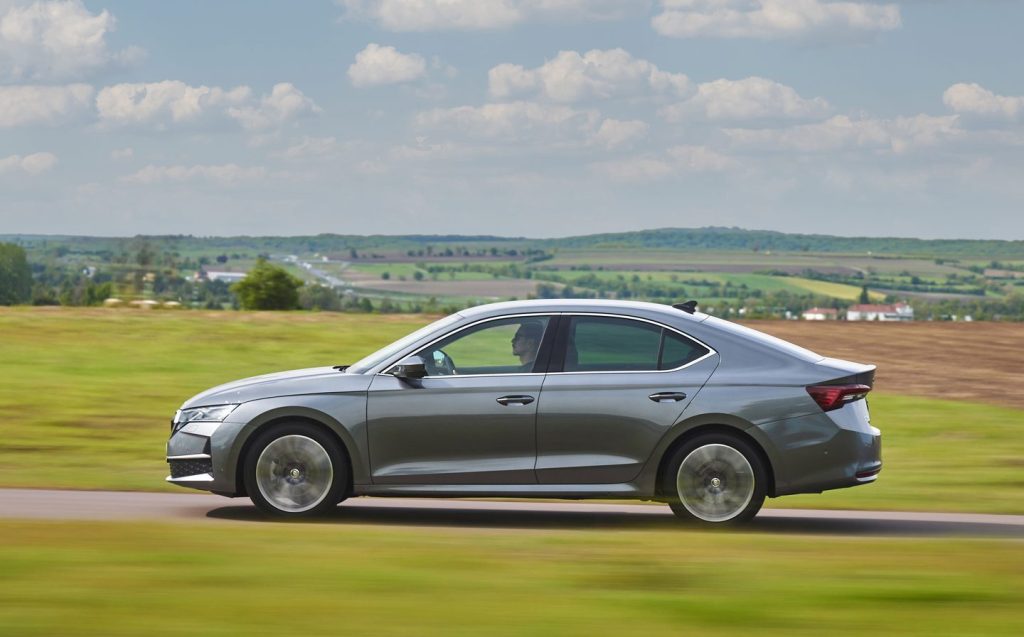
Its extra torque (twisting force) and slick dual-clutch transmission make for the most easy-going of progress in an Octavia, and average fuel economy of around 55mpg without too much effort.
It’s both this parsimony and mid-range muscle which makes it our preferred drivetrain for the Octavia, even if it generates just a hint more background vibration and rumbly noise all around the rev range than the TSI alternative.
Still, if you can’t stomach the idea of a turbodiesel these days, the 1.5-litre TSI is a fine second choice, although here – as we’ve found in other Volkswagen Group products using this four-cylinder engine recently – we once again note that while it might be quieter and smoother than the 2-litre TDI below 4,000rpm, if you ever have to rev the petrol out then it becomes quite raucous.
This is more of a problem in the manual models, without the mild-hybrid tech, as they can sometimes become bogged down in a torque hole and need a swift downshift and bit of throttle to get them up to traffic-flow speed again. Whereupon your ears will be assault by a strained din emanating from the engine bay.
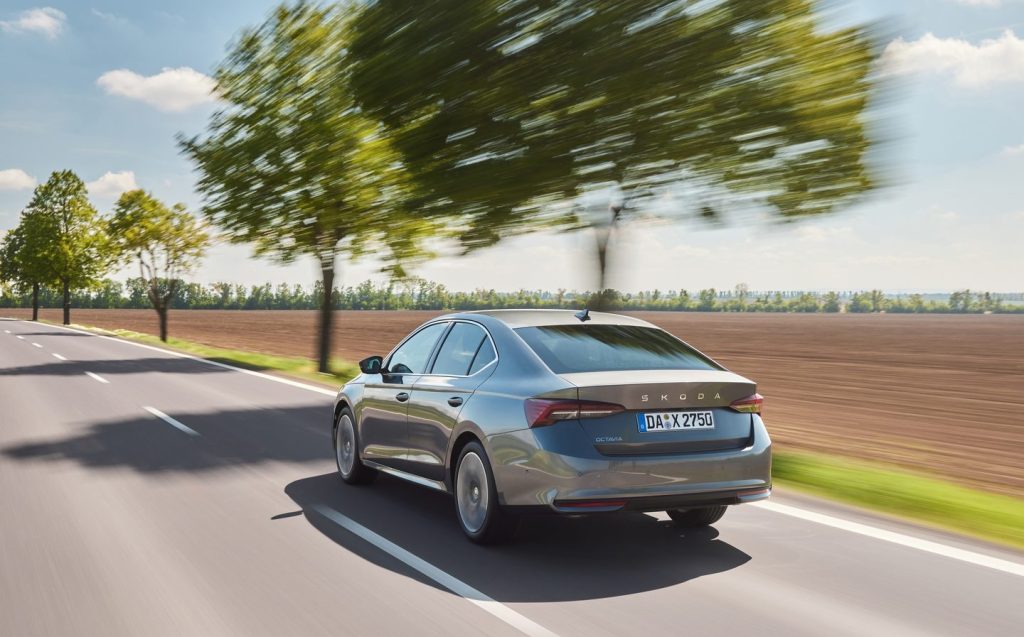
All of which means the 148bhp 1.5 TSI is probably the engine of choice in the revised Octavia, though Skoda UK reckons the lower-powered model will sweep up more sales on these shores. The 114bhp engine replaces the old 1-litre three-cylinder TSI and, having sampled it briefly, this entry-level 1.5 doesn’t appreciably struggle in the Octavia’s large form. In fact, it doesn’t feel much slower than the 148bhp model.
Coming soon to the updated range will be the updated vRS performance flagship, as well as the option of four-wheel drive on certain models. No word at this stage as to whether the Octavia iV plug-in hybrid will be making a reappearance, although fleet managers must be screwing up their eyes super-tight and praying such a situation will come to pass imminently.
Besides its great drivetrains, the Skoda also stands out for its superb refinement. It might not be the most thrilling thing in the corners – although in this regard, its handling is perfectly acceptable for what owners will ask of it – but the ride comfort and suppression of things such as road roar and wind buffeting about the passenger compartment are all second-to-none in this class. Or, indeed, several classes above its station.
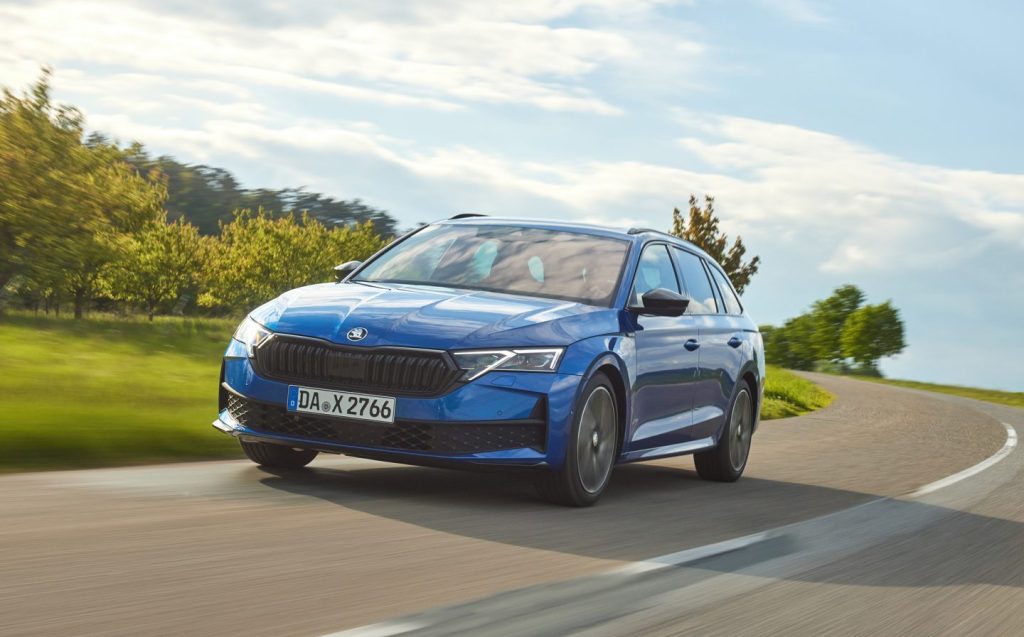
Furthermore, while Dynamic Chassis Control (DCC) 15-stage adjustable damping is available as an option in higher-spec Octavias, it’s not necessary in the slightest when it comes to unlocking the best of the Skoda’s manners.
We drove several varieties of the Czech chariot with the “fixed” suspension, including Sportlines with their 15mm-lower and firmer suspension plus large 18in wheels on rubber-band tyres, and they conducted themselves well on craggy town roads and smooth-surfaced high-speed routes alike.
So, what you get in the facelifted Skoda Octavia, as you have for a long while now, is both quantity and quality – a car that feels like it should be competing several levels up the ziggurat of prestige, given its sheer size and all-round feelgood factor.
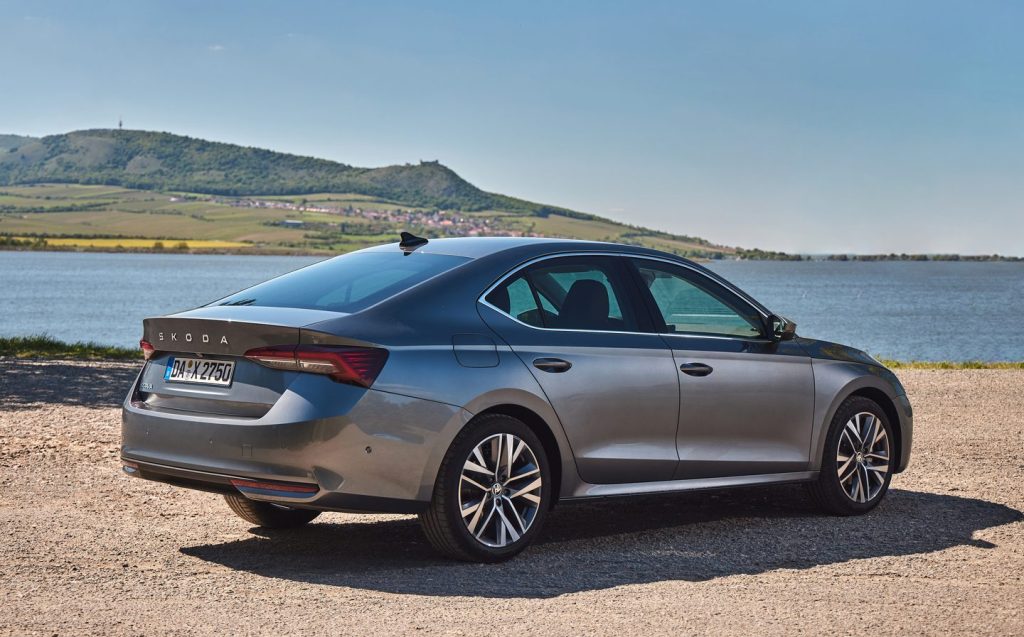
Save for a slightly-too-vocal 1.5-litre petrol engine at higher revs, a somewhat inert chassis and the over-reliance on the central touchscreen for various in-car functions, everything else the Octavia does is just brilliant.
And that, really, is no joke at all. In fact, if we were Volkswagen and Audi’s hierarchy, we’d be taking this clearly class-leading Octavia very seriously indeed.
Related articles
- If you found our review of the updated Skoda Octavia interesting, you might like to read our review of the new Skoda Superb Estate, too
- Want to know what the best-selling cars in the UK are?
- Looking for something more compact? Read our extended test report on the Skoda Kamiq
Latest articles
- Aston Martin Valkyrie AMR-LMH hypercar hits track ahead of 2025 Le Mans challenge
- Porsche has begun testing the electric Cayenne
- Cupra Leon 272 eHybrid 2024 review: Bigger battery, better tech … but is it a Cupra?
- Porsche 911 GTS 2024 review: Hybrid heresy or more Stuttgart genius?
- Extended test: 2023 Vauxhall Astra Sports Tourer GS PHEV
- Ford Capri revival has faced a lot of flak… but are buyers put off? Here’s what visitors to the Festival of Speed had to say
- F1 2024 calendar and race reports: What time the next grand prix starts and what happened in the previous rounds
- ‘No timeframe’ for how long Volvo’s returning estate cars will be on sale in UK
- Kia Picanto 2024 review: Updates add spice to cute Korean city car


